You are using an out of date browser. It may not display this or other websites correctly.
You should upgrade or use an alternative browser.
You should upgrade or use an alternative browser.
Bundeswehr | Germany Armed Forces
- Thread starter UAE
- Start date
Germany finally accepts delivery of lead F125 frigate FGS Baden-Württemberg

FGS Baden-Württemberg on sea trials in 2016. Photo: Bundeswehr
Germany’s defense procurement agency BAAINBw officially received the lead F125 frigate from the shipbuilding consortium on April 30.
Representatives of the ARGE F125 consortium handed the frigate in an official ceremony at the Wilhelmshaven naval base.
FGS Baden-Württemberg, the first of a total of four units in the class, had already been delivered to the navy in 2016 but was returned to the shipbuilder for rectification of software and hardware issues identified during trials.
Baden-Württemberg is now set to be commissioned in June 2019 after a two-year delay.
The German Navy and shipbuilders will spend the next seven weeks preparing the ship for an operational test ahead of the commissioning.
Bundeswehr photo of the official handover ceremony on April 30, 2019.
FGS Baden-Württemberg as lead ship in the class has been experiencing problems ever since it started trials. In addition to hardware and software integration, the frigates have a listing problem. They list 1.3 degrees to starboard and are overweight, an issue that could possibly complicate future upgrade options.
The 7000-ton frigates are replacing the eight Bremen-class frigates currently in service with the German Navy.
They will be armed with HARPOON and RAM missiles, a 127 mm naval gun, two 27 mm and five 12.7 mm guns. The 150-meter ships will have a complement capacity of 190 persons and a maximum speed of 26 knots.
The ARGE F125 consortium which is responsible for the delivery of ships comprises thyssenkrupp Marine Systems as the lead company and Fr. Lürssen Werft in Bremen.
Pre-fitted bow sections were manufactured at the Fr. Lürssen Werft shipyards in Bremen and Wolgast. Construction of the stern sections, the joining of the two sections and further fitting out was carried out at Blohm+Voss Shipyards in Hamburg under the direction of thyssenkrupp Marine Systems.
The final ship in the class was launched in May 2017.
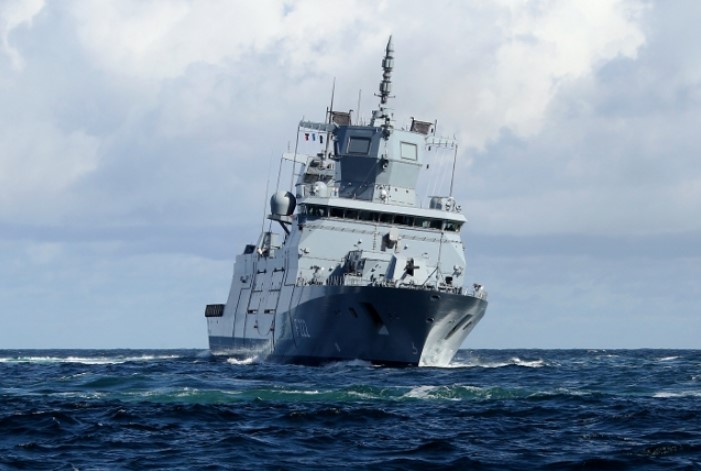
 navaltoday.com
navaltoday.com
FGS Baden-Württemberg on sea trials in 2016. Photo: Bundeswehr
Germany’s defense procurement agency BAAINBw officially received the lead F125 frigate from the shipbuilding consortium on April 30.
Representatives of the ARGE F125 consortium handed the frigate in an official ceremony at the Wilhelmshaven naval base.
FGS Baden-Württemberg, the first of a total of four units in the class, had already been delivered to the navy in 2016 but was returned to the shipbuilder for rectification of software and hardware issues identified during trials.
Baden-Württemberg is now set to be commissioned in June 2019 after a two-year delay.
The German Navy and shipbuilders will spend the next seven weeks preparing the ship for an operational test ahead of the commissioning.
Bundeswehr photo of the official handover ceremony on April 30, 2019.
FGS Baden-Württemberg as lead ship in the class has been experiencing problems ever since it started trials. In addition to hardware and software integration, the frigates have a listing problem. They list 1.3 degrees to starboard and are overweight, an issue that could possibly complicate future upgrade options.
The 7000-ton frigates are replacing the eight Bremen-class frigates currently in service with the German Navy.
They will be armed with HARPOON and RAM missiles, a 127 mm naval gun, two 27 mm and five 12.7 mm guns. The 150-meter ships will have a complement capacity of 190 persons and a maximum speed of 26 knots.
The ARGE F125 consortium which is responsible for the delivery of ships comprises thyssenkrupp Marine Systems as the lead company and Fr. Lürssen Werft in Bremen.
Pre-fitted bow sections were manufactured at the Fr. Lürssen Werft shipyards in Bremen and Wolgast. Construction of the stern sections, the joining of the two sections and further fitting out was carried out at Blohm+Voss Shipyards in Hamburg under the direction of thyssenkrupp Marine Systems.
The final ship in the class was launched in May 2017.

Germany finally accepts delivery of lead F125 frigate FGS Baden-Württemberg - Naval Today
Germany’s defense procurement agency BAAINBw officially received the lead F125 frigate from the shipbuilding consortium on April 30. Representatives of the ARGE F125 consortium handed the frigate in an official ceremony at the Wilhelmshaven naval base. FGS Baden-Württemberg, the first of a total...
Jagdkommando
MEMBER
Germany begins the construction of lead ship Köln, lead ship of the 2nd batch of the Braunschweig class corvettes

The Americans are pulling out, but the Germans are deploying...?soldiers training in Pasewalk, Germany for the upcoming deployment to Afghanistan
View attachment 7187
View attachment 7188
View attachment 7189
View attachment 7190
View attachment 7191
as part of as a Resolute mission I think and that's it.The Americans are pulling out, but the Germans are deploying...?
as part of as a Resolute mission I think and that's it.
Does Germany give military aid to Afghanistan? unfortunately, the issue in Afghanistan seems deep-rooted, not sure if NATO-led coalition does have a roadmap or not but looks to me the Taliban and NATO will keep on fighting until the cows come home. Its been 35 years already hasn't it!
no we do not give the military aid. the ANA has proven time after time they will sell some of their vehicles, firearms and other gears off to the Taliban or other groups because of how corrupt they are. that said, it also has to do with the soldiers who are extremely incompetentDoes Germany give military aid to Afghanistan? unfortunately, the issue in Afghanistan seems deep-rooted, not sure if NATO-led coalition does have a roadmap or not but looks to me the Taliban and NATO will keep on fighting until the cows come home. Its been 35 years already hasn't it!
German corvette deploying for Lebanon mission
May 15, 2019
German Navy corvette FGS Ludwigshafen am Rhein and her crew of 64 will depart naval base Warnemünde on May 17 to start an eight-month deployment to the Mediterranean Sea.
The corvette will support the maritime task force of the United Nations Interim Force in Lebanon, currently led by the Brazilian Navy.
Established in October 2006 at the request of the government of Lebanon, UNIFIL MTF currently has about 800 personnel and six ships: one each from Bangladesh, Brazil, Germany, Greece, Indonesia and Turkey.
FGS Ludwigshafen am Rhein will relieve sister FGS Oldenburg, which has been part of the mission since September 2018.
The German Navy currently operates five Braunschweig-class (K 130) corvettes, with five more on order. Measuring 90 meters in length, the ocean-going ships are designed for operation in coastal waters, augmenting the capabilities of fast attack boats and frigates. They are equipped with the Rolling Airframe Missile (RAM) system, two 27 mm Mauser MLG27 remote-controlled, fully-automatic cannons, and one OTO Melara 76 mm gun.
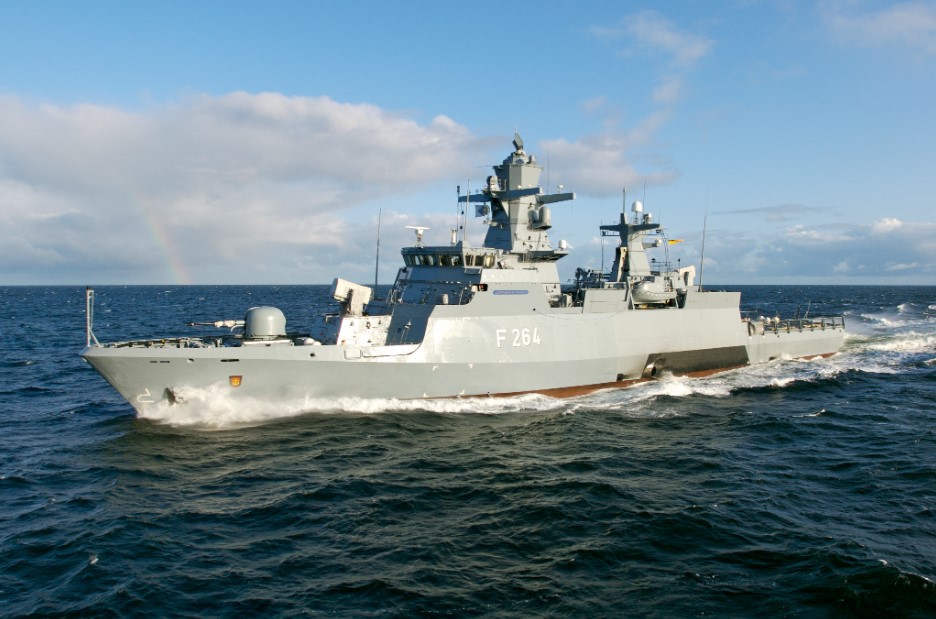
 navaltoday.com
navaltoday.com
May 15, 2019
German Navy corvette FGS Ludwigshafen am Rhein and her crew of 64 will depart naval base Warnemünde on May 17 to start an eight-month deployment to the Mediterranean Sea.
The corvette will support the maritime task force of the United Nations Interim Force in Lebanon, currently led by the Brazilian Navy.
Established in October 2006 at the request of the government of Lebanon, UNIFIL MTF currently has about 800 personnel and six ships: one each from Bangladesh, Brazil, Germany, Greece, Indonesia and Turkey.
FGS Ludwigshafen am Rhein will relieve sister FGS Oldenburg, which has been part of the mission since September 2018.
The German Navy currently operates five Braunschweig-class (K 130) corvettes, with five more on order. Measuring 90 meters in length, the ocean-going ships are designed for operation in coastal waters, augmenting the capabilities of fast attack boats and frigates. They are equipped with the Rolling Airframe Missile (RAM) system, two 27 mm Mauser MLG27 remote-controlled, fully-automatic cannons, and one OTO Melara 76 mm gun.

German corvette deploying for Lebanon mission
German Navy corvette FGS Ludwigshafen am Rhein and her crew of 64 will depart naval base Warnemünde on May 17 to start an eight-month deployment to the Mediterranean Sea. The corvette will support the maritime task force of the United Nations Interim Force in Lebanon, currently led by the...
Germany’s long-awaited antimissile program is about to face politics
By: Sebastian Sprenger and Tom Kington
21 May 2019
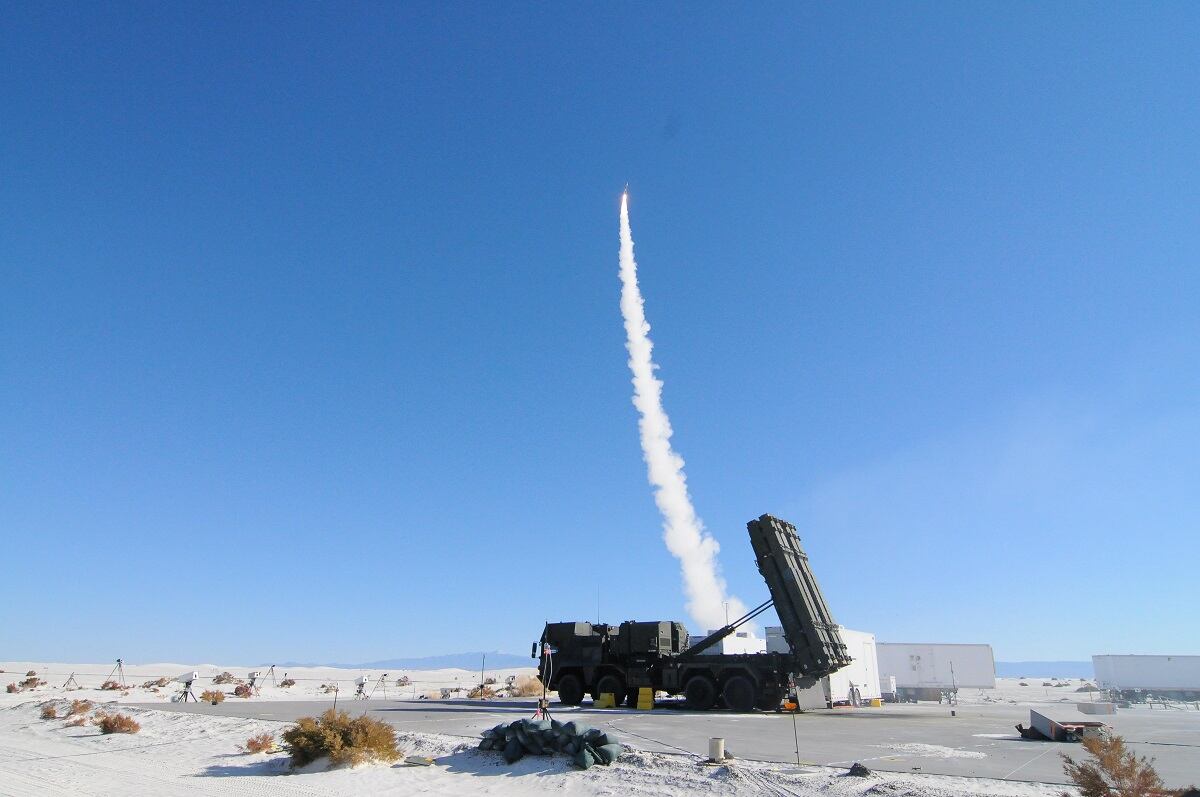
A MEADS launcher sits ready while a second fires a missile in the background at White Sands Missile Range, New Mexico, in 2013. (White Sands Missile Range Public Affairs)
COLOGNE, Germany, and ROME – The German government expects to receive a long-awaited industry offer for revamping the country's missile defenses next month, just as the debate in Germany over defense spending kicks into high gear once again.
The proposal by contractors Lockheed Martin and MBDA Germany for the TLVS program, short for Taktisches Luftverteidigungssystem, will roughly coincide with the Cabinet’s final deliberations on a 2020 budget pitch to lawmakers. Clocking in at an estimated €8 billion, or $8.93 billion, the program is sure to face intense scrutiny once the Bundestag gets wind of the details.
Defense officials have gone to great lengths to say as little as possible about what's in store. They have dismissed the notion that the industry offer is late, arguing that a few extra weeks or months of prep time at the outset would help harden the proposal against problems later on.
Behind the scenes, however, government and industry officials have begun putting together a narrative for justifying a price tag billions of euros above expectations several years ago.
To be sure, there is no official word yet on how much TLVS is going to cost, and it’s unclear how forthcoming the government will be once the final offer is in. The latest figure of €8 billion stems from remarks by a high-ranking defense ministry official who spoke at a closed-door meeting of the Bundestag’s defense committee in February.
A government spokesman would only say that the Lockheed-MBDA proposal is expected in the “first half of the year,” to be followed by an internal government analysis and contract negotiations with the vendor consortium. The plan is to forward a program plan and cost estimates to parliament for debate in late 2019 or early 2020.
Lockheed Martin and MBDA are expected to pitch a program that they argue bears little resemblance to the features of its predecessor, the Medium Extended Air Defense System, or MEADS. On the table is a six- to seven-year development stage, including some initial production of equipment so that German authorities can run tests on new hardware.
One of the key cost drivers lies in preparing the system to one day defend against hypersonic missiles, which means threats flying faster than five times the speed of sound. The feature is in response to German requirements and keeping an eye on Russian developmental weaponry.
Analysts are only now beginning to assess the full extent of hypersonic defense requirements. But it seems likely that a new generation of interceptors more powerful than the envisioned TLVS house ammo, the Lockheed-made MSE missiles, eventually will be needed.
In addition, German officials have pushed to have the entire system under their national control, including the so-called exciter for the fire-control radar. That piece of hardware, a 4 feet by 2.5 feet- sized box, is dubbed the brains of the weapon because it performs all flight-path computations needed to obliterate incoming missiles. The exciter was going to remain a Lockheed Martin-controlled ingredient until German defense officials pushed for a local version, a task that will fall to Hensoldt in the forthcoming offer.
Contributing to the German industry footprint – designed to trumpet a domestic bent and spread the parliamentary love across more districts – is the integration of the so-called IRIS-T SL interceptor made by Diehl Defence. That effort, in turn, comes with the integration of the SAMOC guidance system, made by European defense powerhouse Airbus.
Program advocates still have hope to interest other governments in Europe in the envisioned technology. For example, there is the question of rekindling an old MEADS alliance with Italy.
Italian military commanders are keenly interested in the idea of re-entering the program, although that interest has yet to be shared by politicians, an Italian defense source told Defense News.
“The interest is there at the military level, not the political level,” said the Italian source, who like others in this article declined to be named while discussing sensitive deliberations.
That could prove a stumbling block to Italy’s possible return to a program that Italy was an original member of before the United States decided to quit in 2011.
Since taking office last year, Italy’s populist government has already cut its investment in the European CAMM-ER missile program, and may struggle to meet ongoing funding commitments this year as the country’s economy dips and it seeks cash for welfare programs.
Political pitfalls also await in Germany. News earlier this year that Berlin could fall behind its NATO spending commitments fueled speculation that certain programs would have to be cut and that officials had begun compiling lists of programs deemed more important than others.
In addition, the fate of the CDU-SPD coalition government at the time when TLVS is up for votes early next year is uncertain. While the CDU probably will be supportive, the SPD appears to be hedging its bets as operatives await details from the defense ministry on the way ahead.

 www.defensenews.com
www.defensenews.com
By: Sebastian Sprenger and Tom Kington
21 May 2019

A MEADS launcher sits ready while a second fires a missile in the background at White Sands Missile Range, New Mexico, in 2013. (White Sands Missile Range Public Affairs)
COLOGNE, Germany, and ROME – The German government expects to receive a long-awaited industry offer for revamping the country's missile defenses next month, just as the debate in Germany over defense spending kicks into high gear once again.
The proposal by contractors Lockheed Martin and MBDA Germany for the TLVS program, short for Taktisches Luftverteidigungssystem, will roughly coincide with the Cabinet’s final deliberations on a 2020 budget pitch to lawmakers. Clocking in at an estimated €8 billion, or $8.93 billion, the program is sure to face intense scrutiny once the Bundestag gets wind of the details.
Defense officials have gone to great lengths to say as little as possible about what's in store. They have dismissed the notion that the industry offer is late, arguing that a few extra weeks or months of prep time at the outset would help harden the proposal against problems later on.
Behind the scenes, however, government and industry officials have begun putting together a narrative for justifying a price tag billions of euros above expectations several years ago.
To be sure, there is no official word yet on how much TLVS is going to cost, and it’s unclear how forthcoming the government will be once the final offer is in. The latest figure of €8 billion stems from remarks by a high-ranking defense ministry official who spoke at a closed-door meeting of the Bundestag’s defense committee in February.
A government spokesman would only say that the Lockheed-MBDA proposal is expected in the “first half of the year,” to be followed by an internal government analysis and contract negotiations with the vendor consortium. The plan is to forward a program plan and cost estimates to parliament for debate in late 2019 or early 2020.
Lockheed Martin and MBDA are expected to pitch a program that they argue bears little resemblance to the features of its predecessor, the Medium Extended Air Defense System, or MEADS. On the table is a six- to seven-year development stage, including some initial production of equipment so that German authorities can run tests on new hardware.
One of the key cost drivers lies in preparing the system to one day defend against hypersonic missiles, which means threats flying faster than five times the speed of sound. The feature is in response to German requirements and keeping an eye on Russian developmental weaponry.
Analysts are only now beginning to assess the full extent of hypersonic defense requirements. But it seems likely that a new generation of interceptors more powerful than the envisioned TLVS house ammo, the Lockheed-made MSE missiles, eventually will be needed.
In addition, German officials have pushed to have the entire system under their national control, including the so-called exciter for the fire-control radar. That piece of hardware, a 4 feet by 2.5 feet- sized box, is dubbed the brains of the weapon because it performs all flight-path computations needed to obliterate incoming missiles. The exciter was going to remain a Lockheed Martin-controlled ingredient until German defense officials pushed for a local version, a task that will fall to Hensoldt in the forthcoming offer.
Contributing to the German industry footprint – designed to trumpet a domestic bent and spread the parliamentary love across more districts – is the integration of the so-called IRIS-T SL interceptor made by Diehl Defence. That effort, in turn, comes with the integration of the SAMOC guidance system, made by European defense powerhouse Airbus.
Program advocates still have hope to interest other governments in Europe in the envisioned technology. For example, there is the question of rekindling an old MEADS alliance with Italy.
Italian military commanders are keenly interested in the idea of re-entering the program, although that interest has yet to be shared by politicians, an Italian defense source told Defense News.
“The interest is there at the military level, not the political level,” said the Italian source, who like others in this article declined to be named while discussing sensitive deliberations.
That could prove a stumbling block to Italy’s possible return to a program that Italy was an original member of before the United States decided to quit in 2011.
Since taking office last year, Italy’s populist government has already cut its investment in the European CAMM-ER missile program, and may struggle to meet ongoing funding commitments this year as the country’s economy dips and it seeks cash for welfare programs.
Political pitfalls also await in Germany. News earlier this year that Berlin could fall behind its NATO spending commitments fueled speculation that certain programs would have to be cut and that officials had begun compiling lists of programs deemed more important than others.
In addition, the fate of the CDU-SPD coalition government at the time when TLVS is up for votes early next year is uncertain. While the CDU probably will be supportive, the SPD appears to be hedging its bets as operatives await details from the defense ministry on the way ahead.

Germany’s long-awaited anti-missile program is about to face politics
Government and industry officials have begun putting together the narrative for justifying a price tag billions of euros above expectations several years ago.
Angela Merkel inspects NATO troops in Germany
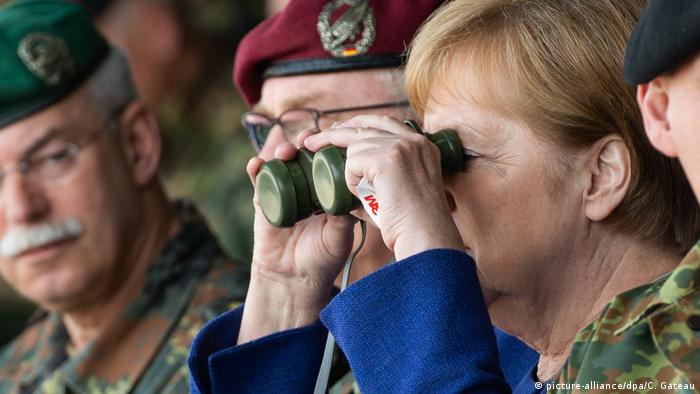
Chancellor Angela Merkel was treated to the full military works in Munster on Monday, on a visit to the Bundeswehr's 9th Armored Demonstration Brigade, which is this year providing the ground forces for NATO's Very High Readiness Joint Task Force (VJTF).
Much of the major hardware the Bundeswehr has to offer took part in an impressively coordinated half-hour display, which the chancellor watched through binoculars alongside General Eberhard Zorn, the highest ranking German soldier, and Lieutenant General Jörg Vollmer, chief of staff of the German army.
The display itself involved reenactments of full-on assaults involving multiple armored vehicles, complete with tanks crossing water-filled ditches, helicopter rescues and in-flight refueling operations. Tiger helicopters, Tornado fighter planes, several Leopard 2 battle tanks, as well as amphibious armored vehicles, motorcyclists and bridge-building trucks, all took part.
Merkel herself arrived at the parade ground in an Enok military police vehicle, before posing for a number of photos in front of various ranks of soldiers and pieces of heavy equipment. She also had lunch with some of the soldiers.
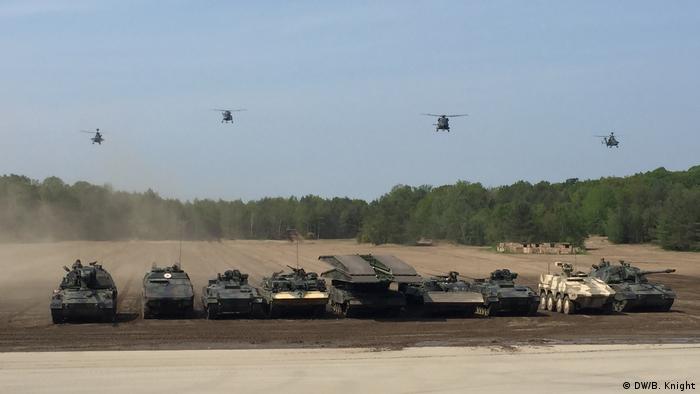
The Bundeswehr's full NATO complement was on display in Munster
Political significance
This was the chancellor's first visit in seven years to Munster, the biggest German army base in the country and home to more than 5,000 military personnel. In a brief address following the display, Merkel touched on the political importance of the VJTF, which NATO founded in 2015 as a direct response to the war in eastern Ukraine, and the potential Russian aggression on the alliance's eastern borders.
Since 2012, she said, the "political task has of course completely changed.
"With what we experienced [in Ukraine], a new situation has emerged that has made the defense of the alliance's own territory a priority once again," she said.
"The capabilities that we put on the scales are a contribution so that others know we are serious about defending our territory," Merkel said. "And that is why the possibilities of negotiations are opened. That means talking about peace is not enough; we have to prove that we are ready to defend that peace."
"We know that the establishment of the VJTF came in connection with the events of 2014," Lieutenant Colonel Michael Wagner, commander of the 93rd armored battalion, told DW. "That is why we take the mission especially seriously. We also know that beyond that we are to create a deterrence effect."
The VJTF includes soldiers from nine European NATO partners, including France, the Czech Republic, Lithuania, and Latvia — the latter having a particular interest in protecting themselves from what they see as the ever-present Russian threat. Norwegian, Dutch and Belgian officers were also on hand for the display on Monday, and Norway last year played host to the largest NATO military exercises in its history.
But the brigade still needs to be renewed for the digital age. The soldiers said a major overhaul was being planned over the next few years that will include making sure soldiers can be tracked with GPS devices during operations, and an upgrade of the digital communication between the various international forces also expected.
"There is material coming, and it is getting to the soldiers, and it really is good for my soldiers when they see that something is happening," said Wagner, who was keen to underline the progress that had been made despite reports of equipment shortages in the Bundeswehr.
The chancellor's visit was "a great honor for us, and reflects the status that this VJTF has for her," Wagner added.
Ready for Russia
The exercise was regarded as an opportunity to show the chancellor how important Germany's practical commitment to NATO is: the military's advance press statement said the VJTF duties "required permanently available material," a rather pointed comment given the Bundeswehr's much-publicized problems in finding reliable hardware.
The Bundeswehr has repeatedly called for more financial resources, most recently last Friday, when a Defense Ministry spokesman said the German military "was a force that for many years had to make do with dwindling budgets and shrinking structures." Those calls have been supported by pressure from NATO allies, particularly the US, to meet the alliance's defense budget target of 2% of GDP.
The 2019 German defense budget is €43.2 billion, some €5 billion more than last year, and Merkel did not miss the opportunity on Monday to underline the "significant increase" in military funding. But it's still some way below the 2% target, though Germany's financial contribution to NATO also comes out of the budgets of other ministries, for instance when non-German NATO soldiers are housed on German soil.
Merkel mentioned the importance of the brigade to NATO, too. "For us it becomes politically clear again that it's nice when we can fulfil our alliance duties with this brigade," Merkel told the soldiers.
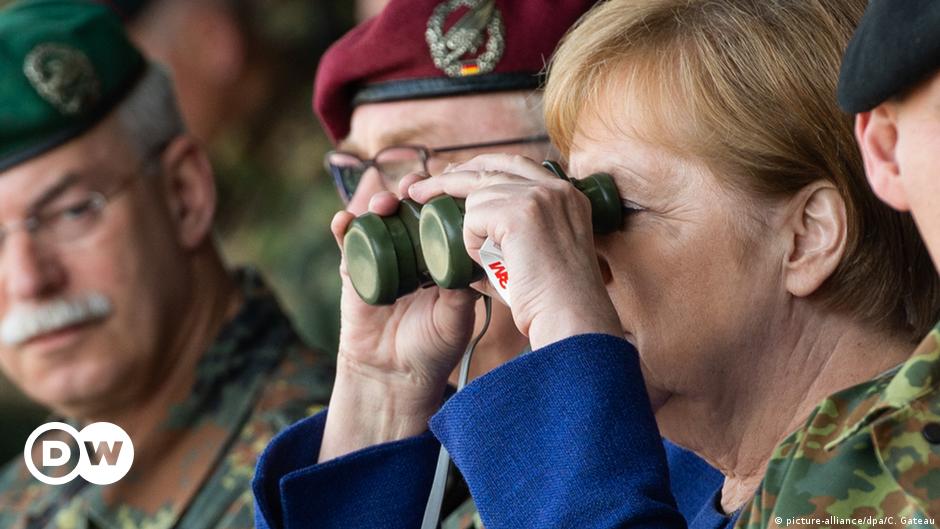
 www.dw.com
www.dw.com
- Date 20.05.2019
- Author Ben Knight (Munster, Germany)

Chancellor Angela Merkel was treated to the full military works in Munster on Monday, on a visit to the Bundeswehr's 9th Armored Demonstration Brigade, which is this year providing the ground forces for NATO's Very High Readiness Joint Task Force (VJTF).
Much of the major hardware the Bundeswehr has to offer took part in an impressively coordinated half-hour display, which the chancellor watched through binoculars alongside General Eberhard Zorn, the highest ranking German soldier, and Lieutenant General Jörg Vollmer, chief of staff of the German army.
The display itself involved reenactments of full-on assaults involving multiple armored vehicles, complete with tanks crossing water-filled ditches, helicopter rescues and in-flight refueling operations. Tiger helicopters, Tornado fighter planes, several Leopard 2 battle tanks, as well as amphibious armored vehicles, motorcyclists and bridge-building trucks, all took part.
Merkel herself arrived at the parade ground in an Enok military police vehicle, before posing for a number of photos in front of various ranks of soldiers and pieces of heavy equipment. She also had lunch with some of the soldiers.

The Bundeswehr's full NATO complement was on display in Munster
Political significance
This was the chancellor's first visit in seven years to Munster, the biggest German army base in the country and home to more than 5,000 military personnel. In a brief address following the display, Merkel touched on the political importance of the VJTF, which NATO founded in 2015 as a direct response to the war in eastern Ukraine, and the potential Russian aggression on the alliance's eastern borders.
Since 2012, she said, the "political task has of course completely changed.
"With what we experienced [in Ukraine], a new situation has emerged that has made the defense of the alliance's own territory a priority once again," she said.
"The capabilities that we put on the scales are a contribution so that others know we are serious about defending our territory," Merkel said. "And that is why the possibilities of negotiations are opened. That means talking about peace is not enough; we have to prove that we are ready to defend that peace."
"We know that the establishment of the VJTF came in connection with the events of 2014," Lieutenant Colonel Michael Wagner, commander of the 93rd armored battalion, told DW. "That is why we take the mission especially seriously. We also know that beyond that we are to create a deterrence effect."
The VJTF includes soldiers from nine European NATO partners, including France, the Czech Republic, Lithuania, and Latvia — the latter having a particular interest in protecting themselves from what they see as the ever-present Russian threat. Norwegian, Dutch and Belgian officers were also on hand for the display on Monday, and Norway last year played host to the largest NATO military exercises in its history.
But the brigade still needs to be renewed for the digital age. The soldiers said a major overhaul was being planned over the next few years that will include making sure soldiers can be tracked with GPS devices during operations, and an upgrade of the digital communication between the various international forces also expected.
"There is material coming, and it is getting to the soldiers, and it really is good for my soldiers when they see that something is happening," said Wagner, who was keen to underline the progress that had been made despite reports of equipment shortages in the Bundeswehr.
The chancellor's visit was "a great honor for us, and reflects the status that this VJTF has for her," Wagner added.
Ready for Russia
The exercise was regarded as an opportunity to show the chancellor how important Germany's practical commitment to NATO is: the military's advance press statement said the VJTF duties "required permanently available material," a rather pointed comment given the Bundeswehr's much-publicized problems in finding reliable hardware.
The Bundeswehr has repeatedly called for more financial resources, most recently last Friday, when a Defense Ministry spokesman said the German military "was a force that for many years had to make do with dwindling budgets and shrinking structures." Those calls have been supported by pressure from NATO allies, particularly the US, to meet the alliance's defense budget target of 2% of GDP.
The 2019 German defense budget is €43.2 billion, some €5 billion more than last year, and Merkel did not miss the opportunity on Monday to underline the "significant increase" in military funding. But it's still some way below the 2% target, though Germany's financial contribution to NATO also comes out of the budgets of other ministries, for instance when non-German NATO soldiers are housed on German soil.
Merkel mentioned the importance of the brigade to NATO, too. "For us it becomes politically clear again that it's nice when we can fulfil our alliance duties with this brigade," Merkel told the soldiers.

Merkel inspects NATO troops in Germany – DW – 05/20/2019
The German military has put on a major display for the chancellor to show off its NATO commitment. Speaking to soldiers, Angela Merkel underlined the importance of showing the alliance was ready to defend its territory.
Sikorsky to offer King Stallion for German heavy-duty helicopter contract
MAY 29, 2019
By Ed Adamczyk
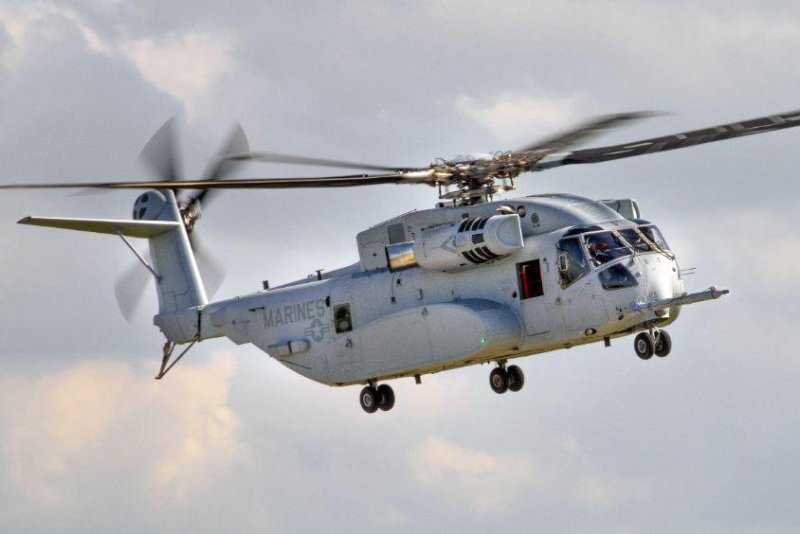
Lockheed Martin's Sikorsky division said it will bid on a contract by the German military for heavy-duty helicopters, offering its new CH-53K King Stallion helicopters. Photo courtesy of Sikorsky
May 29 (UPI) -- Lockheed Martin's Sikorsky division announced it will offer its CH-53K King Stallion helicopter in a competition to win a contract with the German air force.
A request for proposals for a heavy-lift helicopter is expected from the Bundeswehr, Germany's unified military force, during the summer, Sikorsky said on Monday. The "Schwerer Transporthubschrauber," or STH, program will require obtaining helicopters offering quick movement of troops and equipment.
Sikorsky is developing the King Stallion, the newest variant of its Super Stallion, or CH-53E, helicopter. Twelve were ordered in February by the U.S. Marine Corps, at a cost of $1.2 billion, with first deployment expected in 2023 or 2024. Over 1,400 test hours have already been recorded. The helicopter can externally lift up to 27,000 pounds.
The U.S. Navy is expected to order as many as 200 King Stallion aircraft.
"The CH-53K is the modern heavy lift solution that will provide the German Armed Forces with a safe, reliable heavy lift helicopter that can be entered into service seamlessly without need for upgrades for the next several decades," said Sikorsky President Dan Schultz in a statement.
"It is the only heavy lifter that will remain in production through 2032 and beyond. Our strong German industry team will provide sustainment and maintenance over the next 40-50 years ensuring high-quality jobs across the country for decades to come," Schultz said.
Sikorsky has business relationships with at least 10 major German technology companies which could serve as subcontractors, the company said.
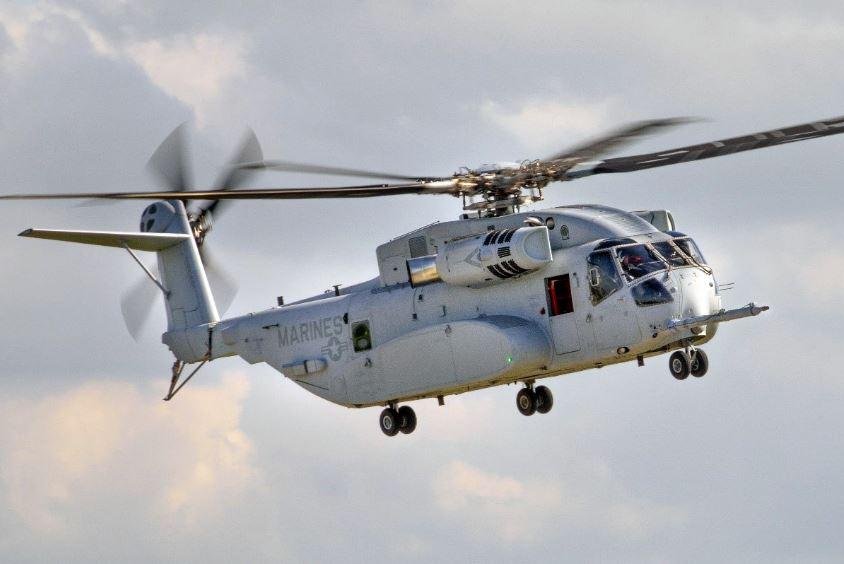
 www.upi.com
www.upi.com
MAY 29, 2019
By Ed Adamczyk

Lockheed Martin's Sikorsky division said it will bid on a contract by the German military for heavy-duty helicopters, offering its new CH-53K King Stallion helicopters. Photo courtesy of Sikorsky
May 29 (UPI) -- Lockheed Martin's Sikorsky division announced it will offer its CH-53K King Stallion helicopter in a competition to win a contract with the German air force.
A request for proposals for a heavy-lift helicopter is expected from the Bundeswehr, Germany's unified military force, during the summer, Sikorsky said on Monday. The "Schwerer Transporthubschrauber," or STH, program will require obtaining helicopters offering quick movement of troops and equipment.
Sikorsky is developing the King Stallion, the newest variant of its Super Stallion, or CH-53E, helicopter. Twelve were ordered in February by the U.S. Marine Corps, at a cost of $1.2 billion, with first deployment expected in 2023 or 2024. Over 1,400 test hours have already been recorded. The helicopter can externally lift up to 27,000 pounds.
The U.S. Navy is expected to order as many as 200 King Stallion aircraft.
"The CH-53K is the modern heavy lift solution that will provide the German Armed Forces with a safe, reliable heavy lift helicopter that can be entered into service seamlessly without need for upgrades for the next several decades," said Sikorsky President Dan Schultz in a statement.
"It is the only heavy lifter that will remain in production through 2032 and beyond. Our strong German industry team will provide sustainment and maintenance over the next 40-50 years ensuring high-quality jobs across the country for decades to come," Schultz said.
Sikorsky has business relationships with at least 10 major German technology companies which could serve as subcontractors, the company said.

Sikorsky to offer King Stallion for German heavy-duty helicopter contract - UPI.com
Lockheed Martin's Sikorsky division announced it will offer its CH-53K King Stallion helicopter in a competition to win a contract with the German air force.
